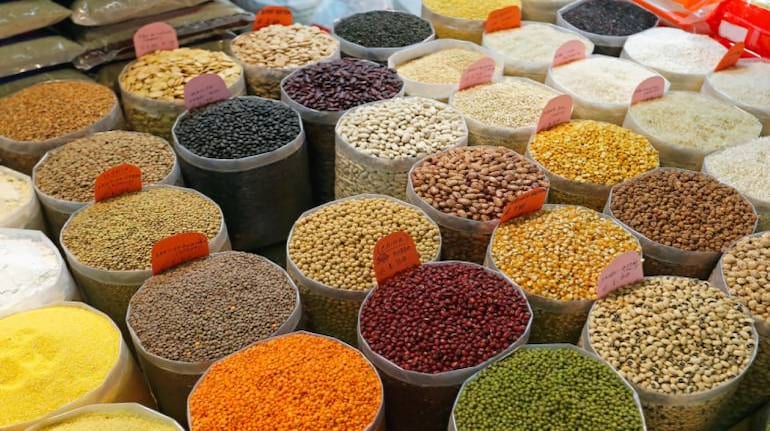



The distribution of free grains through the Public Distribution System (PDS) under the Pradhan Mantri Garib Kalyan Anna Yojana (PMGKAY) has been one of the main relief measures undertaken by the Indian government in response to the economic distress brought about by the Covid pandemic. From April 2020 until the end of 2022, all beneficiaries under the National Food Security Act (NFSA) were given five kilograms of free foodgrains per person per month (with a break between November 2020 to May 2021). With the pandemic almost coming to an end and the stocks of foodgrains under the Food Corporation of India (FCI) depleting to the lowest levels in the last four years, many anticipated that the PMGKAY would not be continued further. There were also reports of the finance ministry being unhappy about the last extension due to the additional subsidy burden.
In this context, the central government based on a cabinet decision came up with an unexpected announcement on December 23. While the PMGKAY has indeed not been extended to 2023, the foodgrains being distributed under the NFSA at Rs 3 per kg for rice and Rs 2 per kg for wheat will now be given for free for a year (up to December 2023). This move will result in an additional burden of about Rs 18,000 crore per year for the government, while it would be saving around Rs 1.8 lakh crore that it would have to spend had it continued with the PMGKAY.
From the point of view of the beneficiaries, this would mean a saving of Rs 10-15 per month per person on the 5 kg of foodgrain that they receive under NFSA. But, on the other hand, they would have to spend almost Rs 150 per month to buy the additional 5 kg from the market to compensate for the grain that they have been getting under PMGKAY. Therefore, while this move towards giving NFSA grains for free is welcome, the net effect on the ration cardholder is one of them having to bear additional costs on foodgrains at a time when food prices are rising and the economic slowdown continues to have a negative bearing on the poor and their livelihoods.
Addressing DistressA number of field studies have shown that the PMGKAY has been one of the most effective measures taken up by the government during the pandemic. While there were some reports of irregular distribution or leakages of various kinds, most people across surveys reported receiving the free grains along with their usual quota. People have been reporting high levels of food insecurity, despite getting free grains under PMGKAY – which is probably an indication of how much worse things could be in its absence. The free and subsidised grains are an implicit income transfer to people and ensure basic protection from starvation.
The fact that the union government has repeatedly extended the period of the PMGKAY, with the last phase ending in December 2022, was also seen as an acknowledgement of the continuing distress that people were facing and the effectiveness of the PDS towards mitigating this to some extent. It is also understood that because the NFSA was already in place, the implementation of the PMGKAY became possible. There were already such a large number of people with ration cards because of the expansion that took place following the NFSA which mandates coverage of 75 percent of the rural population and 50 percent of the urban population.
The last two years showed that the PDS plays a critical role in the economy and needs to be strengthened rather than being dealt with in an ad-hoc manner. The government has been giving out confusing signals by repeatedly arguing in reports such as the Economic Survey, that the PDS coverage needs to be reduced and issue prices increased and on the other making short-term announcements every three to six months on the extension of the PMGKAY and now making foodgrains free.
The PDS could be even more effective if the government had a more coherent and longer-term policy. First, the coverage is currently determined by 2011 Census population figures and this needs to be updated. Further, from a nutrition point of view, pulses and edible oils need to be added to the PDS basket and giving millets as part of the cereal basket needs to be expanded and encouraged. For this, the agriculture policy also needs to encourage these crops and their procurement must be strengthened. A more decentralised procurement and distribution system need to be envisaged. These steps could also contribute to other related goals of crop diversification, income security for small and marginal farmers and guiding Indians towards more healthy diets.
If the PDS is seen from this larger perspective, then it cannot be reduced to a scheme with a high subsidy burden that needs curtailing. It then becomes not a ‘revdi’ but a policy that can give high returns in the form of food security for all along with contributing to a more nutrition and climate-sensitive agriculture.
Discover the latest Business News, Sensex, and Nifty updates. Obtain Personal Finance insights, tax queries, and expert opinions on Moneycontrol or download the Moneycontrol App to stay updated!
Find the best of Al News in one place, specially curated for you every weekend.
Stay on top of the latest tech trends and biggest startup news.